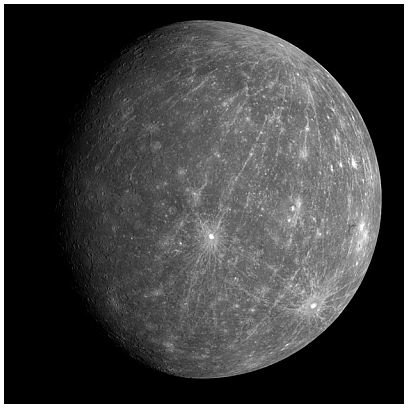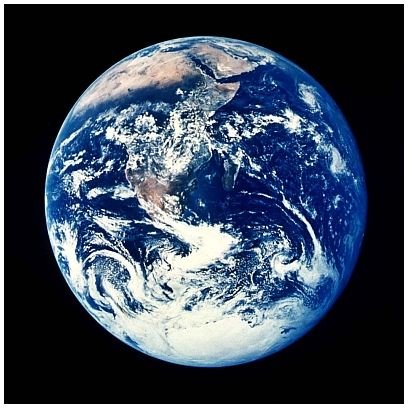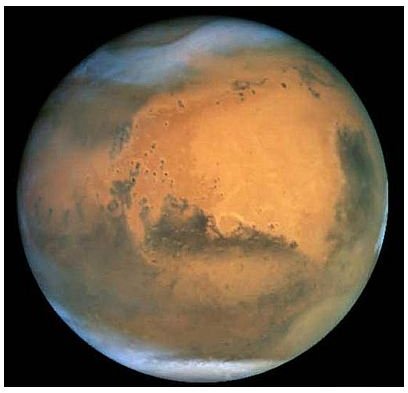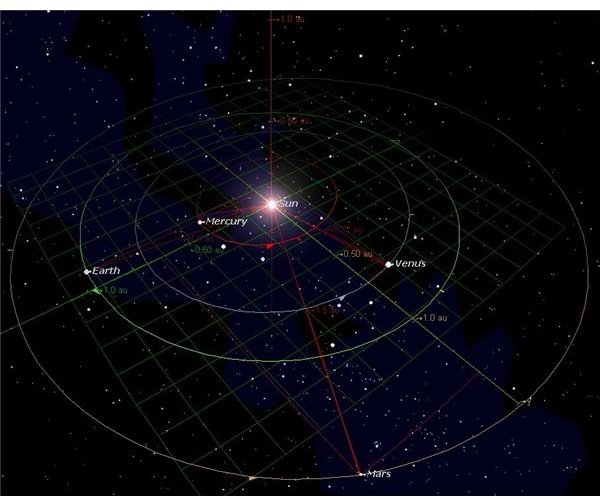Facts About the Inner Planets of the Solar System: A Guide to All 4 Rocky Planets
The Inner Planets
Our solar system is conveniently segmented by the asteroid belt into two regions – the inner and outer solar system. This makes it very easy to group the eight planets we now have into two categories – the inner planets and the outer planets.
The rocky inner planets are much smaller than their gas-giant relatives in the outer system. They also have surface temperatures that are significantly warmer than the outer planets due to their close proximity to the Sun. The inner planets were also well known to the ancient astronomers as they made up the majority of the “wandering” objects visible in the night sky that moved against the fixed stars.
Mercury

First of the inner planets and closest to the Sun is Mercury, named after the winged messenger of Roman mythology. The surface temperature of Mercury is hot enough to melt lead on the sunny side of the planet and with its year only taking 88 days, it is whipping around the Sun! Mercury’s close proximity to the Sun’s gravity-well requires application of Einstein’s general theory of relativity to calculate the precession of the perihelion of its orbit, classical mechanics would not work.
For more detailed information about the planet Mercury check out the following articles: Nothing But the Facts About Mercury and Messenger, the Latest Probe to Mercury.
Venus

On to the second planet from the Sun and the planet sometimes referred to as Earth’s twin, Venus, named after the God of Beauty. Venus is not a nice place to visit with its atmosphere full of carbon dioxide and sulfuric acid. The extreme temperatures on its surface – over 480°C or 900°F – makes it another planet that you don’t want to bring any lead to! Oh, by the way, the atmospheric pressure on the surface is about 92 times higher than it is on Earth. Between the extreme temperature, pressure and acidic atmosphere it is no wonder that probes sent from Earth have not lasted very long on Venus’ surface. Check out Nothing But the Facts About Venus for more detailed information on this mysterious planet, and the Venus Express Probe, which was launched by the European Space Agency to study the planet in 2005.
Earth

If you are reading this you are probably on the third planet from the Sun, Earth. Our blue water planet that harbors (to the best of our knowledge today) the only life in our solar system, sits in an orbit that allows water to remain in a liquid state—very conducive for life. For some very important facts about our planet and a few amazing facts, read the article: Nothing But the Facts About Earth, and if you want to learn more about how life started on our planet, the series on Astrobiology is a great place to start.
Mars

Leaving the comfort of our home world and venturing out toward the outer planets we come across the red planet, Mars – Roman God of War. Mars offers us a tempting target to explore because every two years, when Earth and Mars catch up with each other, it is relatively close—about 35 million miles between the two planets. Mars has a much cooler and dryer climate than its fellow inner planets possess and has had the greatest number of probes launched to it over the years. Water has been discovered on its surface by the Phoenix probe that landed there in May of 2008. The plucky rovers, Spirit and Opportunity are still operating after over 5 years on the surface of the planet and continue to reveal secrets about Mars. More details on Mars can be found in: Nothing But the Facts About Mars, and the Mars Hoax, which seems to resurface every couple of years.
That covers the inner planets. Look for the next article that review the gas-giants that inhabit the outer solar system.
This post is part of the series: Tour of Our Solar System: From the Inner Rocky Planets to the Outer Gas Giants
Take a voyage through our solar system and get the facts and infromation about the inner planets: Mercury, Venus, Earth, Mars, and the outer planets: Jupiter, Saturn, Uranus, Neptune and Pluto (a former planet, but still in the outer solar system).
